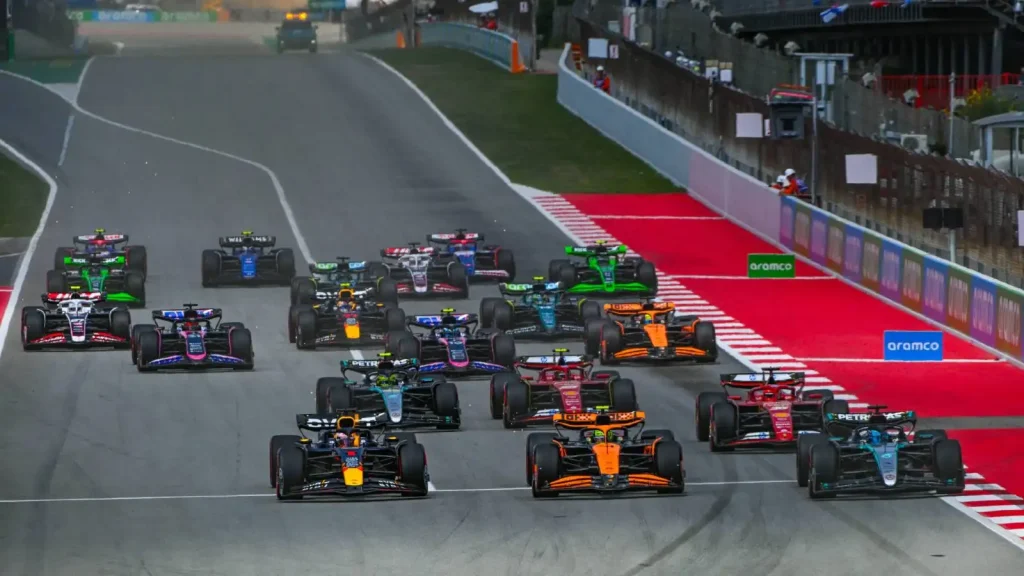The highly anticipated front wing flexibility technical directive will take effect at the Spanish Grand Prix this weekend.
Implications of Technical Directive TD018 for Formula 1
This technical directive, labeled TD018, aims to address front wing flexibility issues and will be implemented at the Circuit de Barcelona-Catalunya. Teams will now face significantly stricter static load tests for their front wings.
Background on TD018
During the winter, the FIA announced that this directive would be introduced at the ninth race of the season, despite earlier hints suggesting that the existing static load tests would remain until the current regulations cycle concluded. Throughout the previous season, high-definition cameras were utilized to assess both front and rear wing flexibility, following concerns regarding visible flexing in designs like McLaren’s MCL38.
McLaren’s Proactive Adjustments
Though the “Mini-DRS” effect seen in televised footage didn’t render the McLaren illegal—as it met the static load tests—McLaren chose to preemptively modify their rear wing designs after discussions with the FIA. Revisions to the technical regulations under Article 3.15.17 also closed potential loopholes by limiting the ‘slot gap’ flexibility to 2mm under a vertical load of 75kg.
Introduction of Enhanced Flexibility Tests
Following examinations of rear-wing flex at the 2025 Australian Grand Prix, tolerance levels were further tightened, with technical directive TD055A reducing them to 0.75mm during the Chinese Grand Prix and eventually down to 0.5mm in Japan. The FIA’s focus also shifted to front wings, making it clear through informal channels that changes were forthcoming as early as November 2024.
Details of the New Flexibility Tests
Under the new flexibility criteria, vertical loads of 100kg will be symmetrically applied to both sides of the car, allowing a maximum deflection of 10mm. If the load is applied to only one side of the wing, the permitted deflection increases to 20mm. For the front wing flaps, a 6kg load must not cause more than 3mm deflection, a reduction from the previous allowance of 5mm.
Future Monitoring and Compliance
The upcoming changes in flexibility are expected to significantly enhance wing rigidity and resolve ongoing concerns regarding wing flexibility during this regulation cycle. FIA’s single-seater director, Nikolas Tombazis, stated that they will closely monitor compliance with these new tests throughout the remaining 16 races. Teams will be checked at various points during the season, including during qualifying and race weekends, to ensure adherence to the updated regulations.



